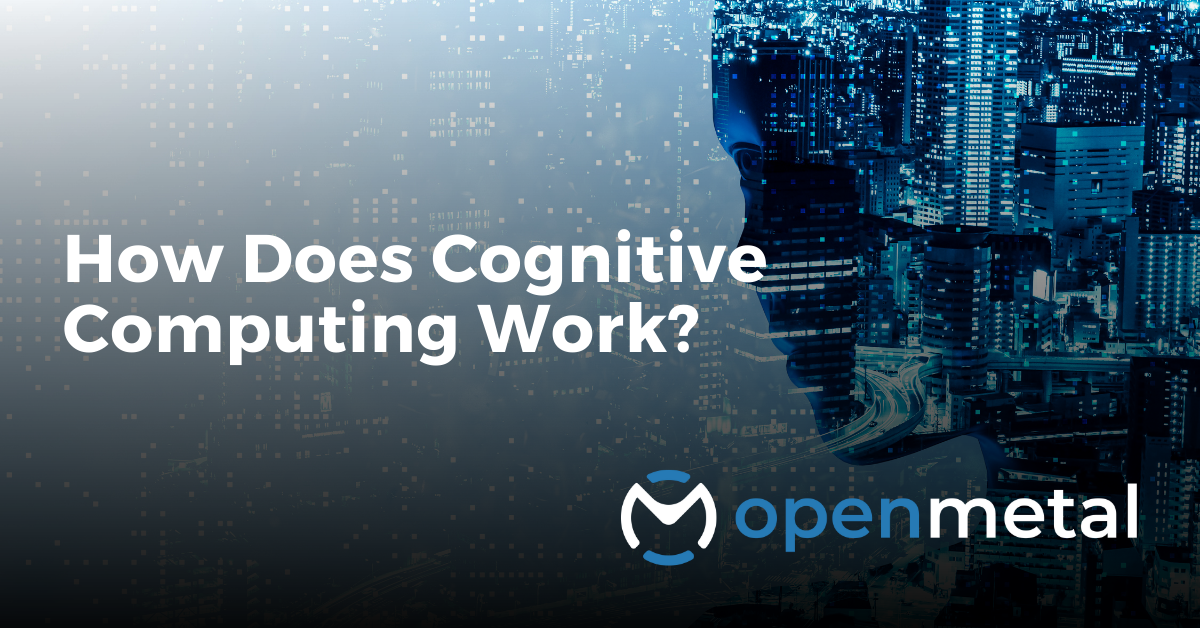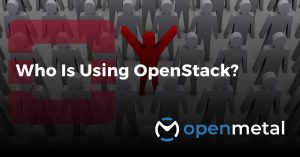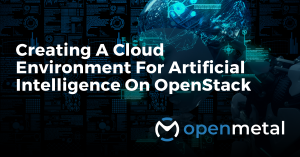Artificial Intelligence (AI) and Machine Learning (ML) have been prominent topics within the technology landscape for an extended period. However, the emergence of AI such as OpenAI’s GPT-3 and Google Bard has elevated the excitement surrounding these advancements. GPT-3 stands as a language model capable of generating remarkably human-like text, garnering significant attention as a transformative force in the AI realm. Yet, how do these AI and ML technologies integrate with the realm of cloud computing? Moreover, what role do open-source cloud platforms like OpenStack play in propelling the progress of such sophisticated technologies?
What is Artificial Intelligence (AI)?
Artificial Intelligence (AI) encompasses the capability of machines to execute tasks that usually require human-like intelligence. This involves skills like recognizing patterns, making reasoned judgments, and reaching decisions. AI-powered systems can process data, learn from it, and apply that learning to achieve goals or solve problems. These systems imitate human cognitive abilities, enabling them to comprehend language, recognize images, and even play games at advanced levels.
What is Machine Learning (ML)?
Machine Learning (ML) is a subset of AI, focusing on the development of algorithms that empower machines to learn from data without explicit programming. In essence, ML enables machines to improve their performance over time by refining their algorithms through data analysis. This means that as more data is fed into the system, the machine becomes better at recognizing patterns, making predictions, and providing insights.
AI and Machine Learning offer a multitude of applications across various industries. For instance, in healthcare, AI can aid in diagnosing diseases from medical images, while ML algorithms can predict patient outcomes based on historical data. In finance, AI-powered chatbots enhance customer support, while predictive analytics helps detect fraudulent transactions. These technologies are transformative in nature, impacting sectors such as transportation, retail, and beyond, by elevating efficiency, accuracy, and decision-making processes. It’s no mystery why there’s such a high demand for AI models.
If you are working with AI and ML you need lots of resources. Sometimes to maintain data integrity, AI models are not connected to the internet where it will be exposed to an abundance of misinformation. But this means that all the information that the algorithm can pull from must be stored somewhere. AI require extensive storage and fast computing capabilities. Because, it’s so resource extensive, you also need scalability, you want your cloud environment to scale your computing resources up when needed but also to scale down when there’s low demand.
AI and ML in the Cloud
The vast amounts of data required for AI and Machine Learning make cloud computing a natural fit for these technologies. These technologies thrive on data, and cloud platforms offer a natural home for their exponential data needs. Cloud computing opens doors to vast computing resources, capable of real-time data processing and analysis. Storing data in the cloud enhances accessibility, fostering collaborative development of AI and ML models. Recognizing the potential, cloud providers have tailored services for AI and ML. For instance, on an OpenStack cloud, you can fashion a potent AI environment to swiftly construct, train, and deploy ML models, harnessing OpenStack’s projects and open source tools.
Open-source cloud platforms, exemplified by OpenStack, have surged in popularity due to their cost-effective and flexible alternatives to proprietary platforms. OpenStack functions as a cloud operating system, empowering users to create and manage cloud infrastructure encompassing compute, storage, and networking resources. It’s a go-to for developers crafting private clouds or tapping into public cloud giants like AWS and GCP.
How OpenStack can be used to Accelerate the development and deployment of AL and ML models
OpenStack, as a robust open-source cloud platform, plays a pivotal role in expediting the creation and launch of AI and ML models. Leveraging its versatile infrastructure and comprehensive set of services, OpenStack provides an ideal environment for developers to harness the power of these advanced technologies.
- Resource Provisioning and Scaling: OpenStack offers a dynamic framework for provisioning computing, storage, and networking resources on-demand. For AI and ML tasks that require substantial computational power, OpenStack’s ability to rapidly allocate virtual machines and dedicated hardware accelerators is invaluable. This elasticity allows developers to scale their infrastructure up or down based on workload requirements, ensuring efficient resource utilization.
- Data Management and Storage: AI and ML models thrive on data. OpenStack’s storage services, including Swift for object storage and Cinder for block storage, provide scalable and reliable options for storing large datasets. This enables seamless access to the necessary training and validation data, a fundamental aspect of building accurate and effective models. OpenStack also allows for Ceph integration. OpenMetal, an OpenStack Cloud provider uses Ceph storage in their OpenStack clouds and also offer large scale object storage clusters.
- Networking Capabilities: OpenStack’s networking services enable the creation of isolated networks, load balancers, and security groups, ensuring that AI and ML workloads operate securely and efficiently. Developers can design network architectures that isolate AI and ML tasks, preventing interference from other applications and enhancing performance.
- Containerization and Orchestration: Containers have become essential tools for packaging and deploying AI and ML applications. OpenStack supports containerization through projects like Magnum, which simplifies the deployment and management of container orchestration engines like Kubernetes. This streamlines the setup and scaling of containerized AI and ML workloads, making them easier to manage. On-Demand OpenStack clouds by OpenMetal comes with built in Magnum templates for deploying Kubernetes clusters on Fedora OS but also support a variety of K8s deployment and management systems.
- Customization and Integration: OpenStack’s open-source nature allows developers to customize the platform to meet specific AI and ML requirements. It offers integration with various open-source tools and frameworks, enabling developers to use their preferred technologies for model development and training.
- API Access and Management: OpenStack provides well-documented APIs that enable developers to interact programmatically with the platform’s resources. This is crucial for automating tasks, managing infrastructure, and orchestrating AI and ML workflows.
- Collaboration and Innovation: OpenStack’s collaborative nature fosters innovation. Developers can share best practices, insights, and solutions within the OpenStack community, accelerating AI and ML advancements collectively.
In essence, OpenStack’s comprehensive suite of services, coupled with its flexibility and scalability, makes it an invaluable tool for accelerating AI and ML model development and deployment. By providing a reliable and adaptable infrastructure, OpenStack empowers developers to focus on creating sophisticated models, testing hypotheses, and ultimately driving AI and ML innovation.
Key Projects in OpenStack cloud environments for AI and ML
- Sahara project offers a simple and efficient way for people using OpenStack to set up and handle data processing frameworks. This project makes it easier to prepare different technologies for processing data, which means you can easily put tools like Hadoop, Spark, and other big data processors to work on OpenStack. Using Sahara, you can quickly create groups of computers, called clusters, and control them using a user-friendly system. You don’t need to know all the complex details about how the computers are set up underneath. Even though Hadoop isn’t made only for AI, it’s a tool that helps process a lot of data, which is important in AI tasks like understanding human language, computer vision, and machine learning. This makes Sahara really important for AI developers.
- Magnum is used to deploy container orchestration engines such as Kubernetes, Docker Swarm and Apache Mesos by making them available as first class resources in OpenStack. Containers are getting more and more popular in AI because they’re a lightweight and smart way to pack and set up AI apps.
- Zun is another part of OpenStack that makes it easier to control containers. With Zun, you can set up and take care of containers on OpenStack using a simple system. Zun has an easy way to control containers through a program interface (API). It also has features to keep containers separate, secure, and connected to other things. Unlike Magnum, you don’t need an extra tool like Kubernetes or Swarm to control Zun. It lets you run and handle containers right on OpenStack without extra steps.
- Ironic is a part of OpenStack that helps you set up and handle bare metal without any extra software. Bare metal servers, work together in groups to do tasks that need a lot of computing power, like machine learning and deep learning. They can do these tasks faster and better than virtual machines. Ironic makes it simple to set up and handle these strong computers on OpenStack, so you can use all their power.
OpenStack vs AWS vs GCP: Price Comparison
While it’s intuitive that open source is more cost effective than proprietary clouds, but we’re still going to take a minute to look at a brief price comparison. Savings of choosing an OpenStack provider like OpenMetal vs mega cloud providers are usually 50%. In a previous blog post, AWS vs GCP: Choosing the Right Cloud Platform provides an in-depth comparison of these cloud providers, but here we’ll quickly look at price comparison.
Looking at OpenMetal’s XL cloud, which accomodates roughly 593 VMs with 36TB egress, and 94,880 GiB SSD persistent disk (160 GiB per VM).


^All prices are estimates only and may be subject to change because of pricing adjustments and/or unique customer resources. Pricing obtained June 2023.
The savings quickly add up and when you’re using as much resources as you do to run an AI algorithm, you definitely don’t want costs stacking up.
In closing, the integration of artificial intelligence and machine learning into the cloud landscape has yielded substantial progress across various industries. Cloud computing platforms, exemplified by OpenStack, can pivotal in empowering businesses to harness the prowess of AI and ML. By equipping them with essential tools and resources, these platforms facilitate the creation, deployment, and expansion of intelligent applications.
The role of open-source platforms, notably OpenStack, is pivotal in propelling the evolution and adoption of AI and ML in the cloud. The abundance of diverse tools, technologies, and frameworks on OpenStack accelerates the development and deployment of intelligent applications, driving innovation and fostering business growth.
As we venture into the future, it’s evident that AI and ML will continue reshaping our lives and professional landscapes. Through harnessing the cloud’s capabilities and leveraging open source platforms like OpenStack, businesses can unlock the complete potential of these technologies. And by doing so, they can remain at the forefront of innovation in a dynamically evolving digital world.
More From OpenMetal

How Does Cognitive Computing Work?
- What Is Cognitive Computing?
- AI And Cognitive Computing
- How Does Cognitive Computing Work?
- Features Of Cognitive Systems

It may be surprising to see large scale OpenStack use cases such as Walmart or China Mobile, or use cases in organizations like NASA who have stringent security regulations, but the ability of organizations to fine tune and customize Open …Read More

Creating A Cloud Environment for Artificial Intelligence on OpenStack
In this blog, we will discuss OpenStack projects and open source software that can be used to create a cloud environment that’s ideal for building, testing, and managing AI.
Test Drive
For eligible organizations, individuals, and Open Source Partners, Private Cloud Cores are free to trial. Apply today to qualify.
Subscribe
Join our community! Subscribe to our newsletter to get the latest company news, product releases, updates from partners, and more.




































